The watercrafts in the Stockholm's archipelago
Stockholm’s archipelago is an area of more than 24,000 islands and small islets situated in the Baltic see near Stockholm, Sweden. It is highly rated by the local residents and loved by tourist as a place for various recreation activities. In the archipelago functions a reliable passenger and cargo transport system, there are many frequented ferries and possibilities for luxurious travels with large commuter ships. The waters are paraded by expensive sailing yachts and fashionable motorboats, but the fishing boats and passenger ships can also catch an eye.
The ferry system over Oxdjupet
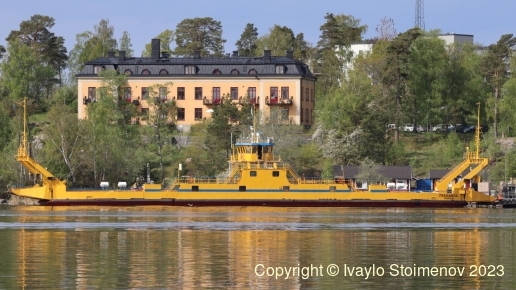
There is a dedicated ferry line for passenger and vehicle transport over the Oxdjupet strait, served by the vessel "Fragancia". The strait is situated between the islands Rindö and Värmdö on a major transport corridor towards Stockholm. In the narrowest parts the distance between the land-masses is about 180 m, while the depth along the strait varies between 17 and 38 m. Oxdjupet is frequently used by many tall cruise ships and building of a bridge is considered impractical. Therefore, the solution for connecting the neighboring islands for cars and passengers is to use a ferry boat.
The ferry routes around Vaxholm
The route between Vaxholm and Rindö is connected by two car ferries, “Nina” and “Castella”, alterating in both directions. The ferry line is known as Vaxholmsleden. The total distance traveled is about 970 m and it usually takes 6 min to traverse. The line starts from the west side of Rindö, continues around the small island of the Vaxholm’s castle and finishes at the south harbour (Söderhamnen) of Vaxholm. The timetable of the ferries usually is synchronised with the ferry system over Oxdjupet, since both lines are part of a major transport corridor in and out Stockholm.

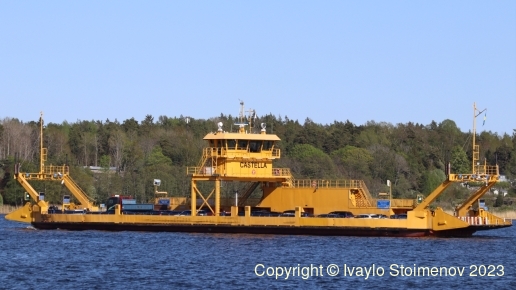
The ferries are able to transfer around 40 cars, local buses and a lot of passengers. In the active hours a ferry boat is parked on each side, and when one side leaves the other ferry also starts to travel. This achieves efficient traffic with a minimum waiting time. The traffic of the vessels, passengers and cars transportation, as well as the safety of the route is managed by the Swedish Road Administration.

between the town of Vaxholm
and the island with a castle.
The town of Vaxholm is connected to the nearby island through a cable-ferry, with an electrical motor. Thus, the transportation is quite silent and potentially independent of fossil fuels. The route is called Kastelletleden and it is only 200 m. It was opened for the first time in 2016. The vessel “M/S Vaxholmen” leaves from “Pier 9” of Vaxholm harbour and traverses the short distance in a straight line to the island.
Passenger transportation in the archipelago
“M/S Västan”, “S/S Storskär” and “S/S Norrskär” are among the oldest passenger ships, still in service at the Stockholm’s archipelago. All three are owned by the public transport operator “Waxholmsbolaget” and comprise the classical fleet of the company. “M/S Västan” was built in 1900 as a steamer, however, in 1953 the propulsion was changed to a diesel motor. “S/S Storskär” was launched in 1908, wheres “S/S Norrskär” was launched a in 1909, but completed in April 1910. Both are designed and still function as steam ships, transporting passengers and small cargo packages by a steam-propelled engine. All three vessels are listed as historic Swedish ships (K-marked) and are having a value of national heritage.
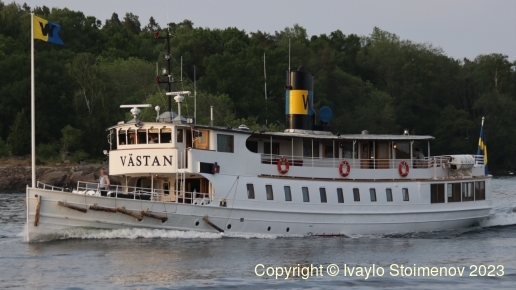
M/S Västan passenger ship.
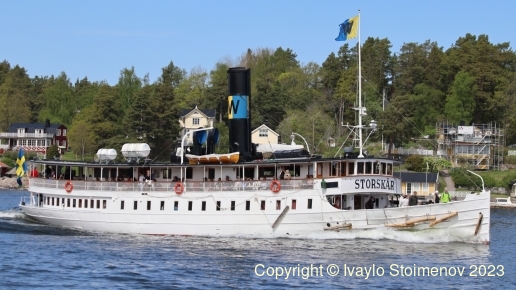
S/S Storskär passenger ship.
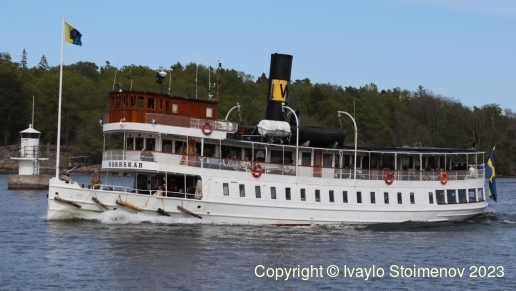
S/S Norrskär passenger ship.
Waxholmsbolaget operates around 20 vessels from different building periods. Next to the classical fleet are the ice-strengthened passenger ships, such as “M/S Solöga”, “M/S Waxholm I”, “M/S Söderarm”. The hulls of these vessels are extra strong, made to withstand an ice impact during the winter.
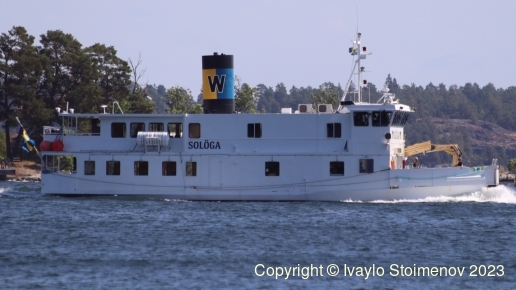
M/S Solöga passenger ship.

M/S Waxholm I passenger ship.
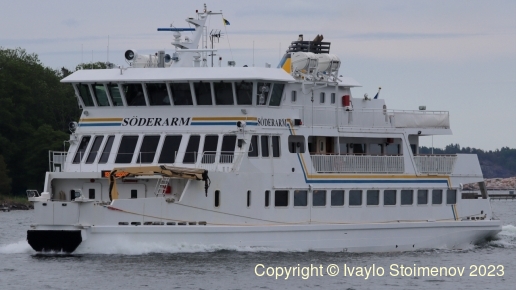
M/S Söderarm passenger ship.
“M/S Dalarö” and “M/S Gällnö” are ice-breakers of a newer generation.
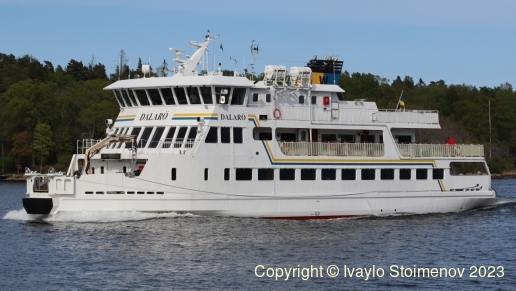
M/S Dalarö passenger ship.
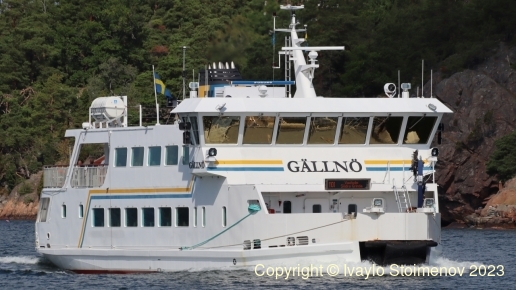
M/S Gällnö passenger ship.
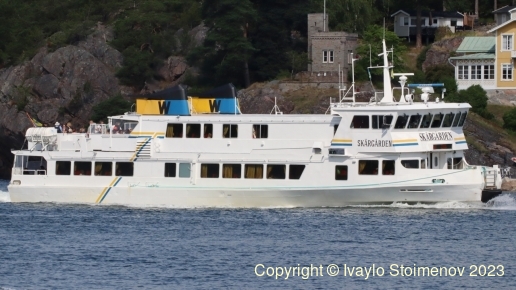
M/S Skärgården passenger ship.
“M/S Vaxö”, “M/S Viberö”, “M/S Vånö”, “M/S Väddö” and “M/S Värmdö” are five sister ships built in the 1990s’s and are collectively known as the “V-boats”. “M/S Värmdö” was the first to complete in 1990 at Oskarshamn’s shipyard, followed by “M/S Vånö” in 1991, “M/S Väddö” in 1992, “M/S Viberö” and “M/S Vaxö”, both in 1993. All five passenger ships were completed in Oskarshamn.
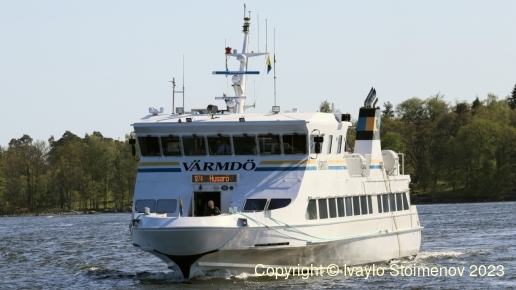
M/S Värmdö passenger ship.
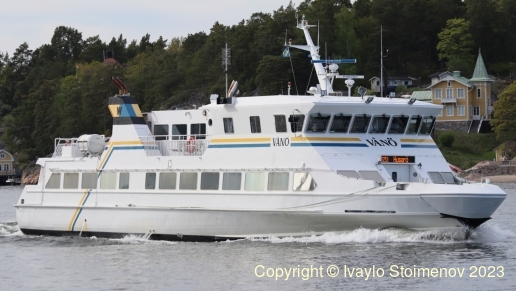
M/S Vånö passenger ship.
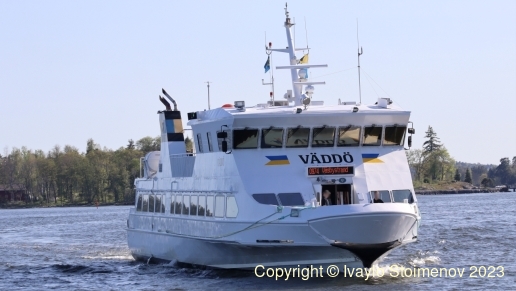
M/S Väddö passenger ship.
“M/S Saxaren” is a half-sister vessel to the V-boats, built by “Båtservice Holding A/S”, Norway. It was completed in 1999.
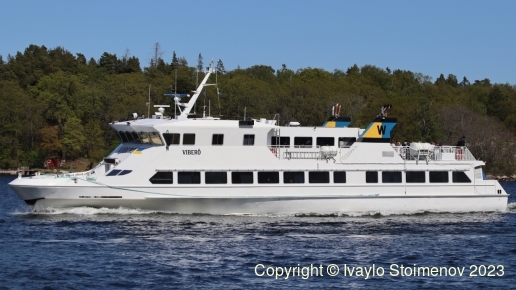
M/S Viberö passenger ship.
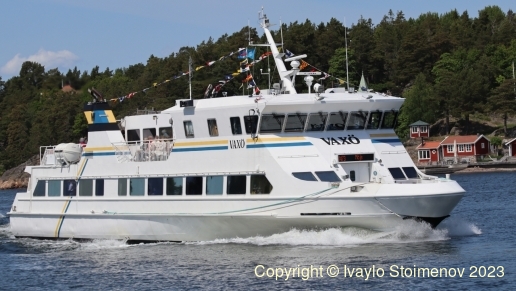
M/S Vaxö passenger ship.

M/S Saxaren passenger ship.
Side by side to Waxholmsbolaget are several other companies responsible for the public transport in the archipelago. Another prominent shipping line is Blidösundsbolaget, which operates around 10 own vessels and also manages several of the boats of Waxholmsbolaget. “M/S Östan”, “M/S Silverö” and “M/S Sjöbris” are in the passenger fleet of Blidösundsbolaget.

M/S Östan passenger ship.
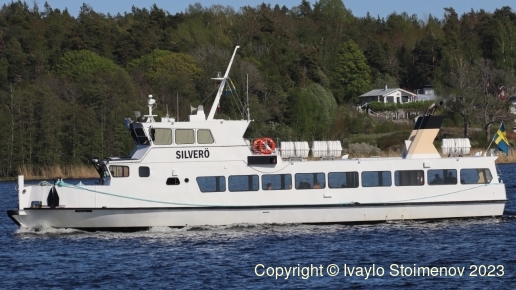
M/S Silverö passenger ship.
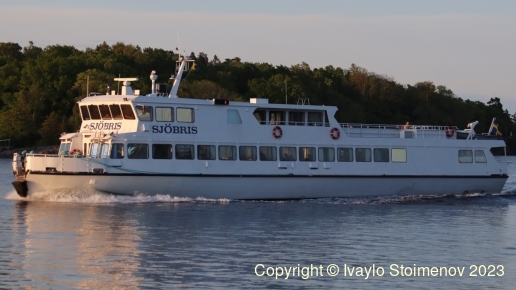
M/S Sjöbris passenger ship.
“M/S Nordan” was built in 1970 as a sister-ship to “M/S Östan” and currently operated by Ingmarsö Sjötjänst AB. “M/S Cinderella II” is built in 1987 and currently operated by “Cinderellabåtarna” during the warmer months of the year.
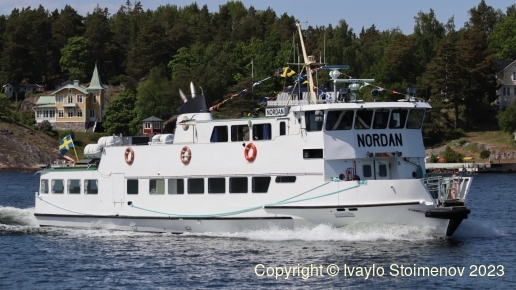
M/S Nordan passenger ship.

M/S Cinderella II passenger ship.
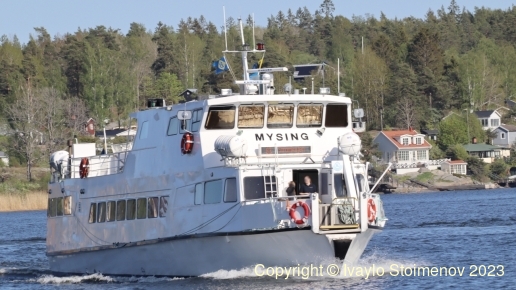
M/S Mysing passenger ship.